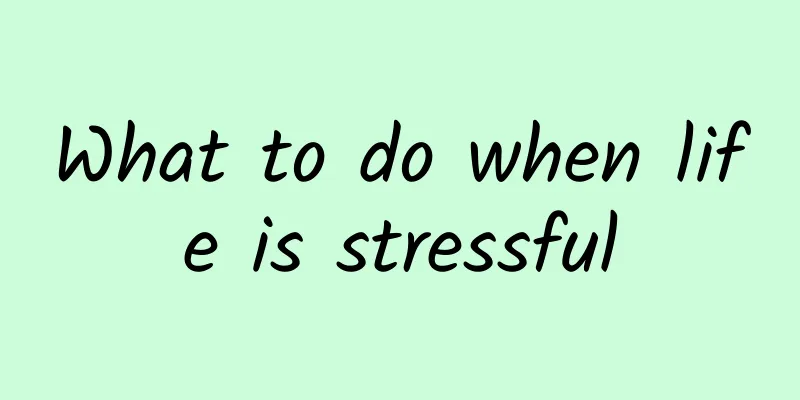Where to apply moxibustion on hand numbness

|
Numbness in the hands is common among many middle-aged and elderly people. This is related to compression of the upper limb nerves, and some are related to cervical spondylosis. In short, it is best to do a comprehensive examination when numbness in the hands occurs. In traditional Chinese medicine, moxibustion can effectively improve the symptoms of numbness in the hands, but which acupoints should be moxibustioned for numbness in the hands? The acupoints for moxibustion are generally Dazhui, Pishu, Neiguan, Yanglingquan, etc., and the effect is good. 1. Where should I apply moxibustion for hand numbness? Treatment plan: Dazhui, Pishu, Neiguan, Yanglingquan. After one moxibustion, the patient's numbness time becomes shorter, mainly in the afternoon. After three moxibustions, the hand is no longer numb. Acupoints for moxibustion: Dazhui, Tianzhu, Yanglingquan, Neiguan, Waiguan, Hegu, Laogong, Houxi, and fingertips are positioned appropriately, and moxibustion is applied directly to the acupoints using moxa sticks or using suitable moxibustion devices. According to the principle of moxibustion on the upper side first and then on the lower side, back and forth, each acupoint should be moxibustioned for 15-20 minutes or until a blush appears on the skin. Moxibustion each acupoint once a day. Generally, chronic diseases will be improved or cured after three months of moxibustion. If used for health care, moxibustion can be applied long-term. 2. What is the reason for numbness in hands? 2.1. Compression of upper limb nerves One is numbness and pain in the thumb, index finger, and middle finger, often with a history of waking up from numbness at night. The condition may improve with activities after waking up, but in severe cases, it may be accompanied by hand muscle atrophy, affecting the fine movements of the hand. This is because the nerves are compressed in the wrist, the so-called "carpal tunnel syndrome." The second is numbness and pain in the little finger, and there may also be a history of waking up from numbness at night. Severe cases are accompanied by muscle atrophy and decreased flexion strength of the little finger, affecting fine movements. This is because the nerve is compressed at the elbow, a condition called cubital tunnel syndrome. 2.2 Cervical spondylosis The most common disease that causes numbness in the hands is cervical spondylosis, which is one of the most common diseases among middle-aged and elderly people. When people enter middle age, some organs tend to develop degenerative lesions as they age. When degenerative lesions occur in the cervical intervertebral disc, it often leads to cervical disc herniation or sudden hyperplasia or hypertrophy of the joints. Once these protruding cervical discs or hyperplastic joints compress the adjacent cervical nerve roots, cervical spondylosis occurs. In addition to symptoms such as numbness and abnormal sensation in the fingers, cervical spondylosis is also accompanied by other symptoms, such as: muscle soreness in the neck and shoulders, radiating pain in the upper limbs, or movement disorders. 2.3 Stroke Another common disease that causes numbness in the hands is stroke. The book "Health Treasure Book·Stroke" once said: "Anyone who feels numbness or loss of function of the thumb or index finger will suffer a stroke within three years." It is necessary to prevent it: be careful in daily life, eat in moderation, stay away from relatives, and relax your emotions. Although finger numbness does not necessarily lead to a stroke, for middle-aged and elderly people over the age of 40, if they often experience symptoms such as headaches, dizziness, heavy head and light feet, limb numbness, and tongue swelling, and if they also have high blood pressure, high blood lipids, diabetes, cerebral arteriosclerosis and other diseases, they should pay more attention and be alert to the occurrence of stroke. 2.4 Menopausal syndrome In addition, women who enter menopause sometimes experience numbness in their hands, but it is not obvious. With the end of menopause, the numbness will disappear. 3. How to treat numbness in hands Modern medicine: traction, hot compress, muscle relaxants, painkillers, physical therapy, and surgery to remove bone spurs in severe cases. Traditional Chinese Medicine: Acupuncture, massage, Chinese medicine, improve local blood circulation and reduce pressure. Micro bladed needle: For compression in the cubital tunnel, ulnar tunnel, carpal tunnel and near the spinous process of the seventh cervical vertebra, the bladed needle can be used to cut and pry open the area, thereby relieving local pressure and eliminating nerve compression to achieve the purpose of healing. For cervical bone spurs compressing the nerves, a bladed needle is used to loosen the ligaments around the posterior cervical joints, and the position of the cervical joints is adjusted by manipulation to achieve the purpose of not compressing the nerves. At the same time, cooperate with Chinese medicine, physical therapy, hot compress and massage to improve local blood circulation, increase nutrition and recover as soon as possible. What should I pay attention to when my hands are numb? The most fundamental thing is to improve bad habits in life and work. Many young people like to read books while lying on the sofa, working at their desks for long periods of time, or sleeping with their heads down while riding the bus. These are all bad habits. When working, get up every half hour, turn your head and neck, and move around for a while. The air conditioner should not be blown towards the neck. You can prepare a collared jacket in the office and pay attention to keeping your neck and shoulders warm. In addition, pay attention to your sleeping posture; lying flat is best. Sleeping on your side or stomach, with your arms under your head, will increase the burden on your cervical spine. The pillow should be narrow enough to fit under the neck, preferably at the height of a fist. When sleeping, the head is tilted back slightly to ensure a slight curvature of the cervical spine. Especially the training of the neck, shoulders and back muscles. Correct training can strengthen muscle strength, strengthen the normal physiological curvature of the cervical spine, increase the stability of the biomechanical structure of the cervical spine, and at the same time promote blood and lymph circulation, which is beneficial to the recovery of cervical spondylosis. |
<<: Is Uncaria rhynchophylla poisonous?
>>: Which part of the body should be moxibustioned for tuberculosis
Recommend
What to do if the temples are not full, how to make them fuller
If the temples are not full enough, we can take t...
Is it cerebral palsy if the baby rubs his feet?
Careful parents often find that babies rub their ...
What are the Chinese medicinal herbs for liver protection?
As we all know, the liver organ is very important...
How to cure toothache quickly and effectively?
Everyone knows that toothache is unbearable. When...
What is the reason why children cough in the middle of the night?
Although cough is a common disease, we cannot ign...
Cracked elbow skin
Many people have experienced dry, hard and cracke...
Chickenpox Chinese medicine prescription
Severe chickenpox patients will also experience s...
How to treat severe premature ejaculation
Premature ejaculation can be said to be one of th...
Can dandelion and licorice be soaked together?
Dandelion and licorice are both herbaceous plants...
Is there any harm in getting a face-lift injection?
Face-slimming injections can be said to be a savi...
If you have gastrointestinal bloating and difficulty digesting food, try this and it will work fast
Many people suffer from gastrointestinal bloating...
What are the methods of traditional Chinese medicine for treating hemorrhoids?
Traditional Chinese medicine is also a common met...
How does TCM treat uremia?
Everyone knows the profoundness of traditional Ch...
What is rotavirus
Many of our friends may not know much about the d...
What are the effects of insulin?
Insulin is widely used in clinical practice. It c...









